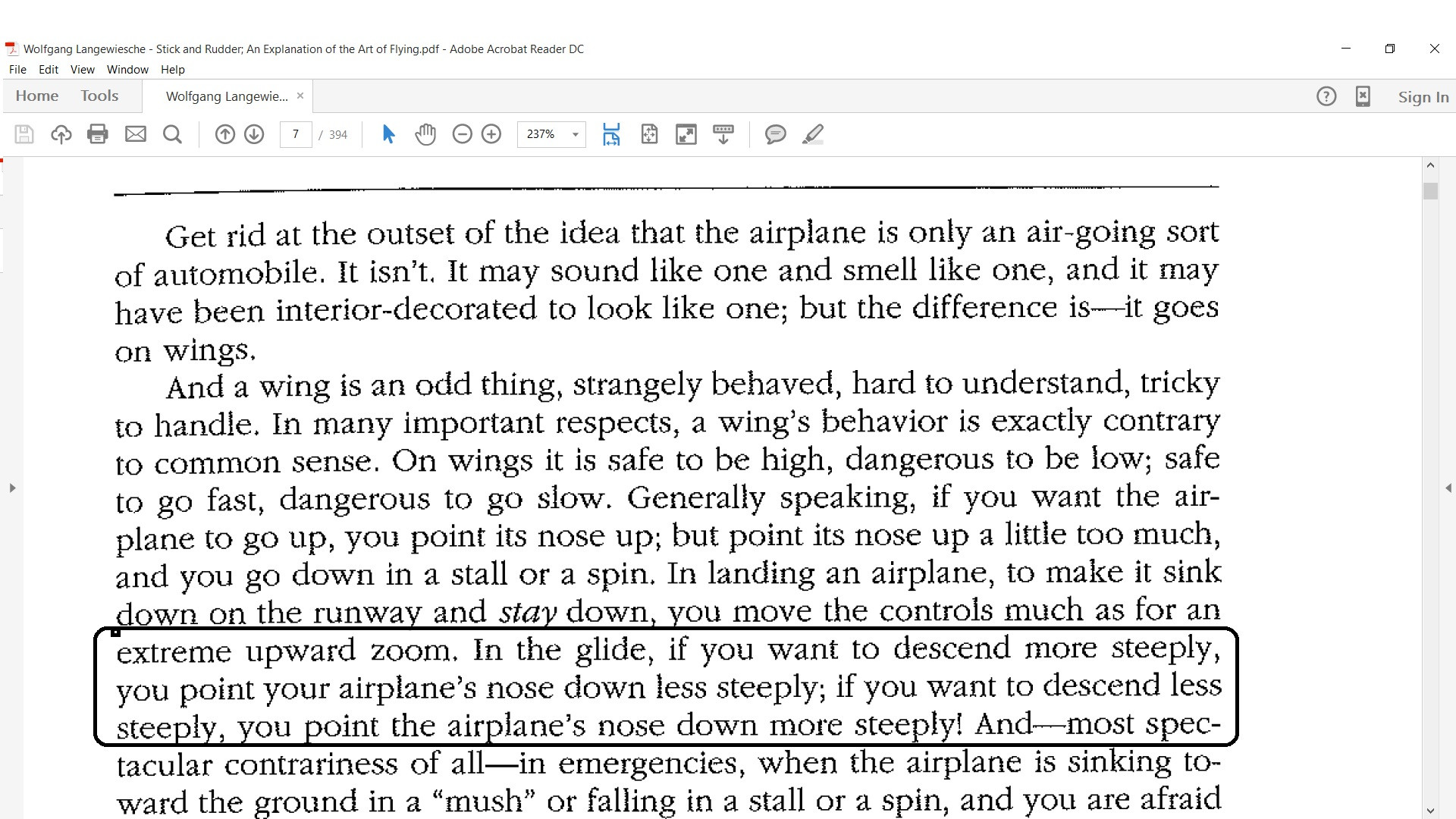The statement is only true if you fly at a speed below the best glide speed. For simplicity, let's look at a glider: Below you see the plot of the L/D ratio over speed of the DG-1000 two-seater glider:

Glide ratio over speed diagram for three different wing loadings (source). If we just look at the lowest wing loading (leftmost curve), the best L/D can be achieved when flying at 95 km/h. Minimum speed is around 62 km/h, so it is entirely possible to fly along at 80 km/h. When the pilot reduces the angle of attack, the aircraft will pitch down and speed up. If it now flies at 90 km/h, he has just improved his L/D from 43 to 46, so he will descend less steeply when dropping the nose.
Note that our flight path angle is now less steep, and the change in attitude is less than the commanded change in angle of attack. Nevertheless, the pitch attitude is reduced and the pilot has the impression that he dropped the nose.
The same is true in reverse when slowing down. When approaching the stall speed, large angle of attack changes will result in relatively small speed changes, so the effect of a steeper descent when pitching up becomes more pronounced as the airplane slows down.
The underlying reason is the fact that drag will increase when the pilot moves away from the best L/D speed. Slowing down will increase drag, and more drag will result in a steeper descent. As soon as he shifts his starting point to higher speeds, things reverse and the aircraft will descend more steeply when the nose is lowered.
Adding an engine will not fundamentally change this behavior. It is only easier to explain when using gliders.


